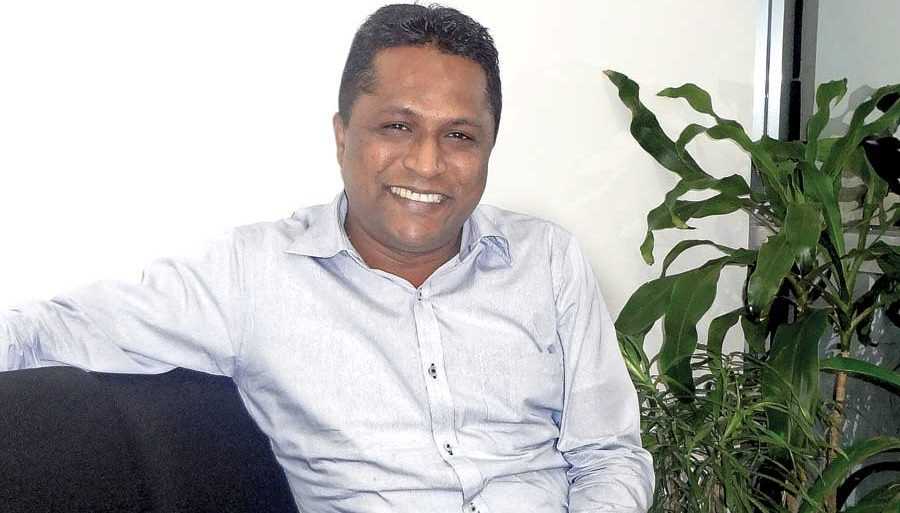
Born out of a joint venture between two large apparel groups – LT Apparel Limited, known for children’s apparel in USA for the last 40 years, and Hirdaramani Group of Sri Lanka, which has been in the textile and apparel industry for 50 years – Comtextile (HK) Ltd. was established in Chittagong in 1984. With offices now in Bangladesh, Sri Lanka, India, Indonesia, Shanghai, Hong Kong and Vietnam, they source textiles, garments and accessories from over 10 countries, and their total turnover is around US $ 175 million. Concentrating on sourcing woven garments at their Chittagong office, Sanjaya Gunasekera, CEO/Director, Comtextile, met Team Apparel Online to discuss their sourcing strategies and future plans…
“We are the pioneers in Chittagong in terms of garment buying house,” says Sanjaya Gunasekera proudly, adding, “There was no other buying office in Chittagong when we established our office here in 1984.” The Chittagong office was also the first sourcing office of the Group, which now has offices Pan Asia. Sanjaya joined Comtextile last year in June 2011 and takes care of the Chittagong operations, dealing with over 50 factories. “In Dhaka we face a lot of competition due to the presence of many buying offices and factories, but in Chittagong there are only few buying offices and the factories we work with have been with us for more than 25 years,” says Sanjaya.
Comtextile earlier was in a way a Walmart office, as 90% of sourcing was being done for them through importers in the US, but now within the last one year the company has entered into other markets like Europe, and has started working with Spanish brands like Mango, VHS and Inditex. “We are now doing about 50% sourcing for Walmart, 35% with Europe and balance with other countries like Australia, Canada and Japan,” informs Sanjaya.
Initially, Sanjaya faced some difficulties while sourcing for European brands for their requirements were very different from Walmart. “European brands are mostly fashion-centric buyers with low-volume requirements as compared to Walmart, but the fact that I had worked with Hirdaramani for 10 years dealing with fashion buyers, came handy,” avers Sanjaya. To achieve the results, Sanjaya had to hire few professionals to support the European business. First he hired a person from Colombo who had the experience of servicing fashion-driven brands, and then went on to hire a wash technician, especially for Mango, as the brand lays great emphasis on washing and finishing on their products. “When we got our first denim order, everybody in the office was surprised for they were used to doing only basic products,” recalls Sanjaya. Now things have changed, the buying operations have a high-tech state-of-the-art in-house design studio and a sampling room to quickly turnaround the various samples required by the fashion brands. The sampling room has about 40 machines that produce around 50 samples a day. “When we started working with the fashion brands, we realized that we have to service them with samples, and our sample rooms were very small, so we expanded last year… but are still struggling with the sampling capacity,” chuckles Sanjaya.
Comtextile has a dedicated accounts manager for every brand under whom there is a PD person and one production expert so that all three work in sync. “We are not like other companies where they have a common PD team who are not brand-specific which creates a lot of confusion as they are working with multiple brands,” explains Sanjaya.
Socially, environmentally and technically compliant factories are the basic requirements of all buyers today and all that Sanjaya’s clients demand is stringent regulation. “We have a wide range of socially compliant suppliers; I haven’t developed separate vendors for my fashion brands. I produce both Walmart and fashion-driven brands in the same factory,” says Sanjaya
Sanjaya shared that there were a few disadvantages of having buying operations in Chittagong, the main one being that the city has limited production capacities. A few ‘A’ grade factories have overbooked capacities, these factories work with buyers directly, and we are compelled to use the ‘B’ grade factories where they need help of product development and marketing. We are very careful when selecting factories to work with and once we get going they will be our long term partners. It takes time to add a new factory to our matrix, so that we can face the challenge to increase the capacity. “Recently we had to drop half million pieces order from Walmart because we could not find the capacity,” points out Sanjaya. The other disadvantage that he faces in Chittagong is that they cannot do much of fashion denim products because of the limitation of wash facilities. However, there are new areas like Kalughat which are coming up in a big way near Chittagong with a few promising big factories being setup there.
The advantages of working in Chittagong are many feels Sanjaya. “I have 7 key factories; they work only with us and have been doing so for the last 25 years. Comtextile books their capacity for the whole year. The factories don’t have to look for a buyer; they don’t require a marketing person or merchandising, they just reserve their production facility for Comtextile,” reasons Sanjaya.
Besides big and medium level players, Chittagong also has many ‘C’ grade factories with 100-odd machines, and since they are non-compliant Comtextile plans to adopt some of these factories. “We are interested in upgrading a few ‘C’ grade factories, as we have so much room to grow but we do not have the capacity; also with these factories we can get the right prices,” says Sanjaya, underlining the fact that it is difficult to negotiate for the right price with established factories since they have their own set of direct buyers and are unwilling to work with buying houses, and pay agent’s commission.

Post a Comment